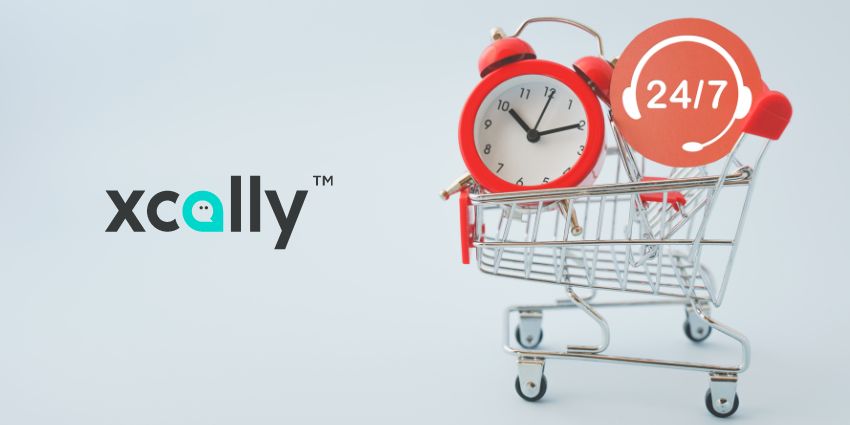Remember the good old days? When the phone was the only way to interact with the contact centre? You could only queue as many calls as the on-premise ACD server could handle and your agents could work 9am-5pm?
Well wake up, its 2021 and its time to adapt to the new normal. In this article, I’m going to provide an idiots guide to unifying voice and digital interactions and tell you the things we as solution providers wish you knew!
COVID-19 has fundamentally changed the landscape of the contact centre and customer experience. It has made call spikes larger, demand more unstructured and accelerated channel shift. Meaning more emails, more web-chats and more social media.
A common thing I see when visiting customers (albeit virtually these days) and seeing how their advisors work, is a real mess on the advisors desktop. It’s very common to have separate or unintegrated solutions for each channel in a mix of browsers and desktop clients. This is hard to use for advisors, stops supervisors understanding how their teams are spending their time and its more for system admins and IT to manage. The name of the game when it comes to unifying voice and digital interactions is to do as many channels in as few interfaces as possible. Simplifying and streamlining an agents workflow.
Don’t Ask For Everything and the Kitchen Sink
One of the things that make reviewing prospect tenders difficult is when it’s not clear what the customer wants, coupled with the assumption you can have everything and the kitchen sink. Long lists of endless feature requirements are often unhelpful, we need prospects to articulate a wider vision across the technology units that make up their contact centre. Generally, this includes:
- Contact Centre Infrastructure
- Customer Relationship Management
- Workforce Optimisation
- Unified Comms
Where voice and digital interactions are concerned the interaction between the first two is imperative.
These days you can do digital channels in agent desktops of cloud contact centre providers or within enterprise CRM solutions. To this end the first thing you need to ask yourself is “Where do I want to handle my digital interactions?”, this will inform the kind of solution you require.
If you have a CRM already you should understand what that CRM can currently do in terms of handling email and web-chat. If it can provide these feature in the way you require you should probably focus on an integrated CCaaS solution but if not you should go with a unified CCaaS solution.
Unified vs Integrated
Within enterprise customer experience two competing models have emerged around how to unify voice and digital channels well. These are the Unified Model and integrated model.
The Unified Model is where all channels are handled by the CCaaS solution and presented to an agent within a unified agent desktop, this is a one-stop-shop for communication. This will often allow various databased or CRM fields to be presented within the vendor agent desktop for contextual information but does not provide a full CRM. This is generally popular for more conservative industries such as the public sector, NHS, utilities and businesses which have not yet adopted enterprise CRM solutions like Salesforce or MS Dynamics.
The other method popular amongst markets with high penetration of enterprise CRM solutions such as financial services, insurance, retail and legal is the integrated CCaaS model.
This is where digital interactions are done natively within the CRM, such as Salesforce chat while the contact centre solution will integrate at the desktop level providing enterprise IVR and self-service options to automate voice calls using data within the CRM and ACD queueing, not just skills-based but increasingly routing repeat contacts back to a familiar agent.
These solutions vary in the depth of integration they can provide with some being able to unify management information with the CRM reporting tool. Furthermore, some can provide more than voice for CRM solutions which don’t offer native digital interaction control or for customers who require more advanced routing.
The key aim remains to do as much as possible, as simply as possible from one integrated screen.
Furthermore, when you understand this principle, it makes selecting and evaluating vendors much easier. That’s why a vision for how your agents work is so important.
Not Every Agent Has to be Omni-channel
A common mistake often seen within the industry is when a customer assumes all their agents will work across all channels. Generally, this comes from stakeholders outside the contact centre, all good supervisors and contact centre managers will know their team’s strengths and weaknesses.
While we talk about the super-agent at industry forums and events, we know we’re not there yet. Therefore, consider which combination of channels you give to agents.
When I’ve held ‘interest groups’ and interviews with agents in the past, both as part as industry research and for enterprise deployments, you notice different skill sets, desires and preferred ways/channels in which to work.
Older agents are generally more confident on voice and can win round customers in distress while younger agents are more agile on channels such as web-chat and social media.
With greater channel shift towards near real-time digital channels, remember it’s important to understand which agents within your contact centre need to unify voice and digital. It may not be right for everyone and you will end up spending more money! When you are implementing a system that does this, ensure new processes are considered and additional training is provided for these agents to upskill them and make them feel part of the change.
Considerations for Unification
Unifying voice and digital interactions remain a challenge, even now, nearly a decade after the technologies to support this unification have become widely available.
This is because too few people understand how enterprise systems fit together and really reflect on how that experience looks like those agents on the frontline. However, the goal when integrating voice and digital channels remains the same:
- To boost agent engagement and productivity: Unifying voice and data should provide agents with a single interface through which they can work on the channels that suit them best. It should also provide the information agents need to boost First Contact Resolution, reduce Average Handle Times and build relationships with customers to increase customer satisfaction
- To streamline business processes: Unifying voice and digital interactions should also streamline your IT strategy, giving you fewer systems to manage thus empowering Operations and Compliance Teams to see data across all channels from a single point of truth, aiding in data-led decision making
- To enhance the customer experience: Unifying voice and digital interactions should boost rates of Customer Satisfaction by allowing your business to see the customer journey across all channels and pivot interactions across channels when an escalation is needed, for example, a compliant on webchat raising to a voice call
There are two distinct models to facilitate this, so consider which one will work for your business based on the solutions you use and how your agents work. Reach an agreement with the key stakeholders across customer service, IT, Operations about which vision you are going to pursue. Then undertake research by talking to suppliers, those in the systems integration and managed services space often factor in these two visions within their portfolio. When you have done this put together your list of requirements with a view to your vision, prioritise what you need and what are nice to have and I guarantee your journey towards unifying voice and data will be far easier.
Guest blog by Johnathan Zemlik, Head of Contact Centre Solutions, Wavenet
Formed in 2000, Wavenet has grown through the last two decades to become a respected, multi-award-winning provider of telecoms and technology solutions to thousands of businesses and enterprises across the UK. Wavenet is a managed service provider and has long-standing partnerships with some of the top technology providers on the planet. Wavenet is a Premier Certified Cisco Partner, Microsoft Partner and holds Platinum Partner status with Mitel, Five9 and Silver Peak.







